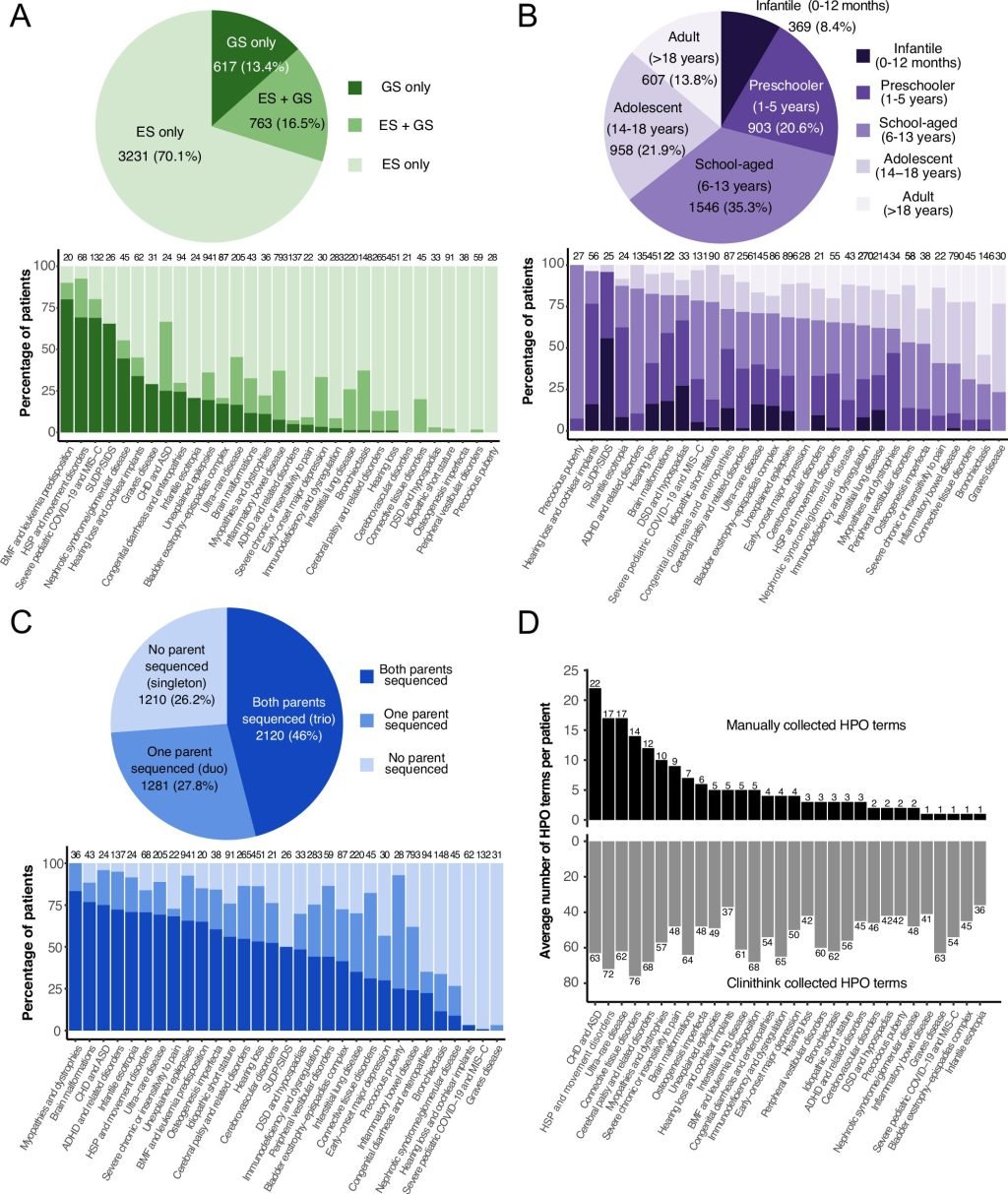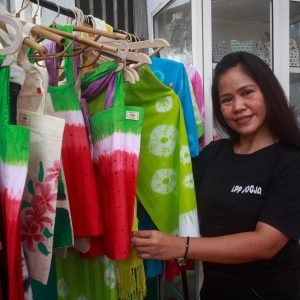
A 14-year-old girl was having back pain after a car accident and visited an orthopedic clinic at Boston Children’s Hospital. In the course of her care, she joined the Children’s Rare Disease Collaborative (CRDC), a hospital-wide effort to enroll children and adults with rare diseases in genetic studies. Genetic testing revealed that both she and her father have osteogenesis imperfecta, also known as brittle-bone disease.
Now seen by an endocrinologist, she’s not alone in having a genetic diagnosis change her care. Two young adults diagnosed with cerebral palsy, for example, have since had their plans revised. One is now being screened for eye, kidney, and heart problems based on their mutation; the other’s symptoms can potentially be addressed with a ketogenic diet.
In another case, a mutation found in a child with lifelong diarrhea and stunted growth pointed to excess production of bile acids in his intestine and liver. Medications to reduce bile acids have vastly improved his quality of life.
“Of those patients who receive a genetic diagnosis, 70 percent have a change in their care,” says Shira Rockowitz, Ph.D., who is data science director within the hospital’s research computing group. “This could be a different drug, a different diet, or a different care plan.”
Launched in 2018, the CRDC has analyzed DNA from more than 13,800 patients and family members. More than 30 percent of enrolled patients now have explanations or promising potential explanations for their conditions.
Many CRDC patients had been to multiple hospitals, spending years or even decades seeking a diagnosis. All have now agreed to share their data so that others might benefit.
Solving cases, advancing care
Combining cutting-edge genomics techniques and powerful computational capabilities with broad disease expertise, the CRDC is uniquely positioned to make genetic discoveries. As described in npj Genomic Medicine, nearly 70 investigators in 26 separate hospital divisions are currently involved in the effort, which now has 52 different patient cohorts. Conditions range from genetic neurologic disorders to kidney failure to craniofacial conditions and ultra-rare blood disorders.
“In addition to ending the diagnostic odyssey for so many patients, the CRDC is creating a valuable genomics resource with the data,” says Courtney French, Ph.D., the report’s first author and a biostatistician with the research computing group. “This will accelerate rare disease research in a way that will have long-lasting impacts on clinical care.”
More immediately, a genetic diagnosis can have a significant impact on patients’ lives. One boy, who was having unexplained falls and hand tremors, had advanced genetic sequencing that revealed a progressive neuropathy caused by an enzyme deficiency. With this diagnosis, he may be eligible for a new treatment awaiting FDA approval.
A genetic autopsy of a baby who died suddenly and unexpectedly found a variant associated with epilepsy. This reassured the parents that their child’s tragic death was related to a medical condition and not their parenting.
Each genetic finding also offers an opportunity to study the workings of a disease. Researchers can then model the mutations in animals or human cells and test compounds that might reverse their effects. That can sometimes open the door to a new treatment. Zebrafish, for example, have proven to be a valuable model for studying the effects of epilepsy-related mutations in which candidate drugs can be readily tested.
A learning platform
When the CRDC first launched, it offered patients exome sequencing, which covers all the genes in the genome that code for proteins. As costs came down, the CRDC introduced genome sequencing, which is more comprehensive and can pick up other kinds of mutations, such as those in genetic elements that turn other genes on or off.
For patients who test negative on both exome sequencing and traditional genome sequencing, the CRDC can provide access to long-read genome sequencing. This advanced technique, not available clinically, can detect complex, hard-to-spot mutations, such as chunks of DNA that have been reversed or have jumped to a different location on the chromosome.
As new technologies come on line, the CDRC updates its computing infrastructure so data can be reanalyzed on an ongoing basis.
Piotr Sliz, Ph.D., Boston Children’s chief research information officer, believes the CRDC is the broadest effort of its kind. He notes that there are often cross-comparisons among patients in the 52 cohorts, since mutations in a given gene can occur in more than one condition. Many conditions affect multiple organ systems, so patients with the same mutation may be seen in different departments.
“We’ve managed to harmonize data across the institution and use the same computing infrastructure to analyze patients’ clinical data,” Sliz says. “Now we can do a really deep dive.”
More information:
Courtney E. French et al, Hospital-wide access to genomic data advanced pediatric rare disease research and clinical outcomes, npj Genomic Medicine (2024). DOI: 10.1038/s41525-024-00441-9
Citation:
Collaborative seeks to change children’s lives through genetics (2024, December 14)
retrieved 14 December 2024
from https://medicalxpress.com/news/2024-12-collaborative-children-genetics.html
This document is subject to copyright. Apart from any fair dealing for the purpose of private study or research, no
part may be reproduced without the written permission. The content is provided for information purposes only.








